

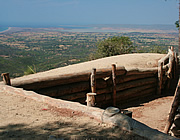
Staying in Çanakkale to visit the First World War Gallipoli battlefields, in particular remembering the men who served with the 1st Lancashire Fusiliers, and the 1/5th and 6th East Lancashires.
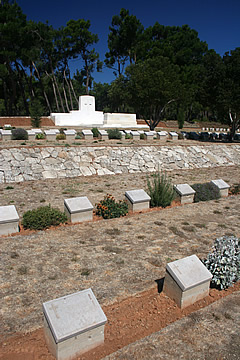
Choosing comfort over convenience, we checked in to the Hotel Kolin at Çanakkale, on the opposite side of the Straits to the Gallipoli peninsula. The 30-minute ferry crossing from Çanakkale to Eceabat is an adventure in itself but does cut into the time available to tour the 1915 battlefields. From Eceabat we drove across the peninsula before turning south towards Cape Helles at the crossroads by the Kabatepe Museum.
Our first stop was at Twelve Tree Copse Cemetery, set in the heart of the Krithia battlefield. Close to the entrance is a stone commemorating Accrington-born Lt. John Bolton, who was fatally wounded by a shell blast in the front line trench on 4th June and is known to be buried in the cemetery. John was one of three sons of Harry Hargreaves Bolton and Florence Eliza Bolton to lose their lives in the First World War.
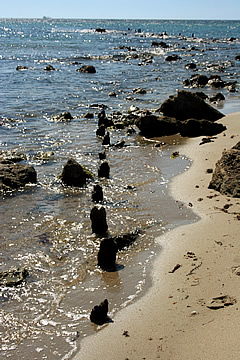
John was killed only 11 days after his elder brother, Capt. Harry Hargreaves Bolton, had been shot by a sniper while leading a working party in No Man's Land. Harry lay beyond the help of his comrades for 4 hours before dying, John being refused permission to go to his brother's aid because of the near-certainty that he too would be shot dead.
Both brothers served with the 1/5th East Lancashires. A younger brother, Capt. Maurice Baldwin Bolton M.C., died on 26th March 1918 from wounds received in action while on attachment to the 2/4th East Lancashires.
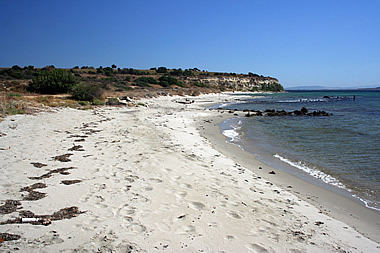
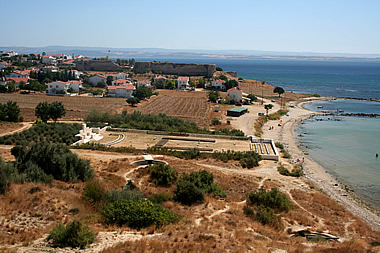
After further stops at Pink Farm and Lancashire Landing cemeteries, we took a track to the right to reach W Beach, or Lancashire Landing, where the 1st Lancashire Fusiliers famously won "six VC's before breakfast" in forcing their way ashore in the face of Turkish machine-gun and rifle fire on 25th April.
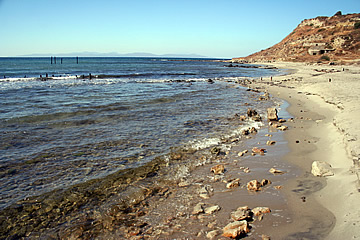
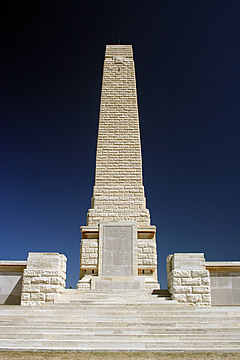
Public access to the beach only became possible in the 1990's following the closure of the adjacent Turkish military base. The beach can have changed little over 90 years, and the dotted remains of embarkation piers can still be seen in the shallow and inviting waters.
We next visited the imposing Helles Memorial which commemorates 21,000 Commonwealth servicemen with no known grave, amongst them Capt. Harry Hargreaves Bolton. Close-by the memorial at the western end of V Beach is the recently-restored Fort No.1.
The fine view from here takes in the whole beach, V Beach Cemetery, and the Old Fort below which the collier River Clyde packed with troops was run aground on 25th April. It is impossible now in this beautiful spot to imagine the carnage that took place here more than 90 years ago when the men of the 1st Royal Munster Fusiliers and 1st Royal Dublin Fusiliers were scythed down by machine-gun fire as they attempted to get ashore.
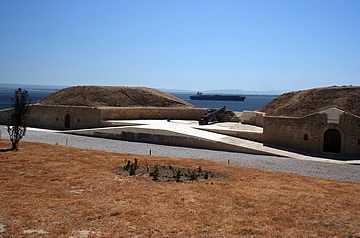
The Mocamp bar/restaurant on the beach provided good food and ice-cold beers with friendly service though it did seem incongruous to be enjoying a meal on the site of such extraordinary tragedy.
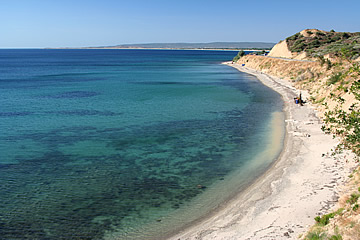
After passing through the village of Seddülbahir, we stopped at Skew Bridge Cemetery to visit the grave of Drummer Joseph Townsend of the 1/4th East Lancashires, killed in action on 18th May at the age of 15.
A visit to Redoubt Cemetery, a short distance down an extremely rough track to the left of the road from Seddülbahir to Alçitepe (Krithia) completed our tour of the Cape Helles sector.
On a second day, we took the coastal road north from Kabatepe, stopping first at Anzac Cove, the unbelievably short and narrow stretch of beach between Hell Spit and Ari Burnu where the Australian and New Zealand Army Corps (Anzac) landed under fire from Turkish infantry on the cliffs above on 25th April. A short walk inland from here brought us to Shrapnel Valley Cemetery.
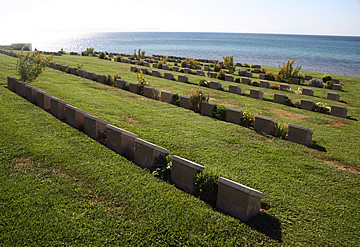
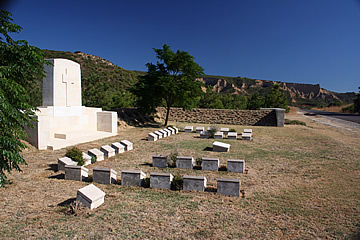
At the north end of Anzac Cove, Ari Burnu Cemetery overlooks the clear blue waters of the Aegean. We had hoped to continue along the coastal road as far as Suvla Bay but the broken road surface discouraged us from going any further than Green Hill Cemetery.
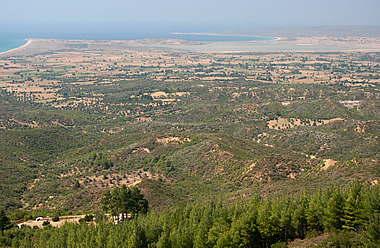
Stopping at 7th Field Ambulance, Embarkation Pier and New Zealand No. 2 Outpost cemeteries on the return journey, the views across to the Sari Bair Ridge gave some impression of the immense task facing the Allied forces in the assaults on the ridge made over 6th-10th August.
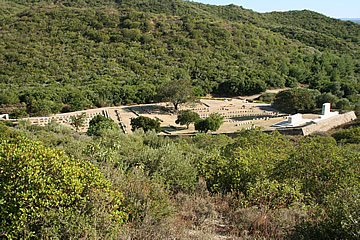
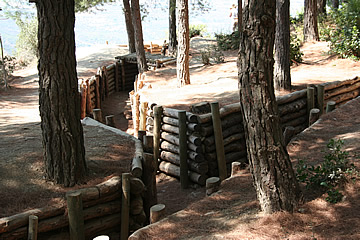
Back at Kabatepe we took the road which climbs the spine of Sari Bair Ridge, stopping first at Lone Pine Cemetery and Memorial, close to where six Australian V.C.'s were won on 9th August. For the next 2km, the road runs between the Anzac and Turkish front lines of 1915. Much work has been done to preserve and reconstruct trenches adjacent and opposite to Johnston's Jolly Cemetery though some of the work looks suspect.
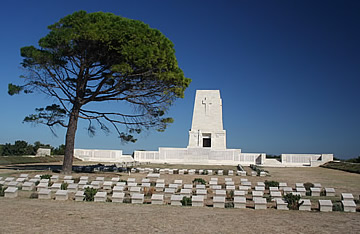
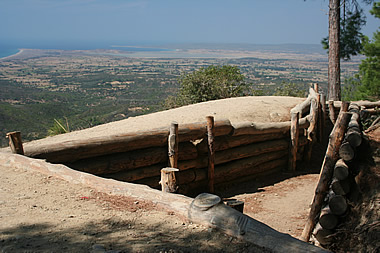
Further along, there are trench remains to the right of the road in the area of Battleship Hill before reaching the most extensively reconstructed set of trenches on the summit of Chunuk Bair.
We made our way down a steep path from here to visit The Farm Cemetery where there are only 7 commemorative stones in a plot which contains more than 650 graves.
In the morning of 9th August, the 6th East Lancashires advanced across this plateau in an unsuccessful bid to regain the summit which had been taken by the New Zealanders the previous day.
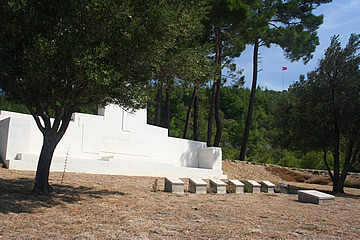
The regimental history describes how the battalion was at once "smitten in enfilade by a hail of shrapnel and streams of machine-gun bullets". At the head of his company, 28-year old Capt. Charles Graeme Lutyens was shot several times. Absurdly, before being taken down to a dressing station where he later died, he apologized to his commanding officer for having got wounded. The battalion lost more than 120 men killed in the attack, yet this Kitchener battalion is today largely forgotten.
The last chance for Allied victory at Gallipoli died with the failure to hold the summit of Chunuk Bair on 8th-10th August. It seemed a fitting place to end our short tour of the battlefields.